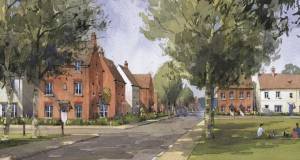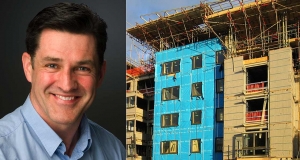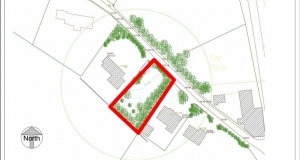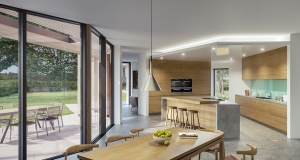- Planning
- Posted
Ballsbridge high-rises may have overreached themselves and the city
Dublin City Council's split decision on Seán Dunne's
extremely expensive Ballsbridge site has left the developer facing an
uncertain future, writes Frank McDonald.
TWO AND a half years ago, when Seán Dunne broke all previous records by paying €53.7 million an acre for the Jurys site in Ballsbridge and then trumped that a few months later by paying €57.5 million an acre for the adjoining Berkeley Court site, there were many who thought it was "mad money".
Within a few months, however, the records he set were broken repeatedly by other developers in what seemed like a frenzy to stake claims on prime property in the heart of Dublin 4. Glenkerrin's Ray Grehan, for example, paid €81 million an acre for the adjoining UCD Veterinary College site.
Mr Dunne made it clear from the outset he would be pursuing plans for a mixed-use development that would include a 32-storey residential tower.
Other developers, including Mr Grehan, were convinced they would get approval for high-rise, high-density schemes to make their money back.
Last August and September, within two weeks of each other, Glenkerrin and Dunne's company, Mountbrook Homes, both lodged their planning applications. By then, Mountbrook's proposed tower had grown to 37 storeys, flanked by seven other buildings ranging in height from 10 to 18 storeys.
By contrast, Glenkerrin's scheme appeared relatively modest, with a 15-storey residential tower - called "No 1 Ballsbridge" - as its centrepiece and three office blocks up to nine storeys high, with cafes, restaurants, boutiques and an arts centre laid out around a square and a new street.
Despite strong objections among the 80 submissions it received, Dublin City Council's planners decided last month to approve the proposed development, with only minor amendments, thereby setting a new benchmark for building heights in Ballsbridge. It is now under appeal to An Bord Pleanála.
When it came to the Jurys/Berkeley Court sites, which are currently zoned residential, the planners exercised a Solomon's judgment of sorts - approving an 18-storey residential block fronting onto Shelbourne Road as well as the proposed hotel, shopping centre, embassy block and cultural centre.
But they refused permission for the 32/37-storey tower as well as a proposed office block, which wouldn't have been permissible under the zoning anyway. The omission of the tower results in a loss of 182 apartments, though Mr Dunne will be seeking permission for a revised scheme to retain as many as possible.
Copies of the planning decision and the planner's report on which it was based will only be available today, so it is impossible at this stage to say why the tower was rejected; presumably, it was on the grounds of excessive height in an area that has not been identified as a suitable location for high-rise buildings.
Its omission undermines the viability of Mountbrook's overall scheme, making it difficult to see how Mr Dunne or his bankers can make their money back. And they can't have much confidence that An Bord Pleanála will agree to reinstate the tower, given the negative stance it has taken on many high-rise schemes.
Neither is there any guarantee that the appeals board will uphold Glenkerrin's proposed development, particularly its 15-storey tower.
The board can only have regard to "proper planning and sustainable development" in making its decisions, and it is unclear how these high-rise schemes fit into that category.
The property market has changed markedly since the height of the boom in late 2005, when huge sums were being paid for sites in Ballsbridge. Schemes that seemed likely to "fly" then may no longer be viable, not just in Ballsbridge but in lower-valued parts of the city that are much more in need of renewal.
© 2008 The Irish Times
Within a few months, however, the records he set were broken repeatedly by other developers in what seemed like a frenzy to stake claims on prime property in the heart of Dublin 4. Glenkerrin's Ray Grehan, for example, paid €81 million an acre for the adjoining UCD Veterinary College site.
Mr Dunne made it clear from the outset he would be pursuing plans for a mixed-use development that would include a 32-storey residential tower.
Other developers, including Mr Grehan, were convinced they would get approval for high-rise, high-density schemes to make their money back.
Last August and September, within two weeks of each other, Glenkerrin and Dunne's company, Mountbrook Homes, both lodged their planning applications. By then, Mountbrook's proposed tower had grown to 37 storeys, flanked by seven other buildings ranging in height from 10 to 18 storeys.
By contrast, Glenkerrin's scheme appeared relatively modest, with a 15-storey residential tower - called "No 1 Ballsbridge" - as its centrepiece and three office blocks up to nine storeys high, with cafes, restaurants, boutiques and an arts centre laid out around a square and a new street.
Despite strong objections among the 80 submissions it received, Dublin City Council's planners decided last month to approve the proposed development, with only minor amendments, thereby setting a new benchmark for building heights in Ballsbridge. It is now under appeal to An Bord Pleanála.
When it came to the Jurys/Berkeley Court sites, which are currently zoned residential, the planners exercised a Solomon's judgment of sorts - approving an 18-storey residential block fronting onto Shelbourne Road as well as the proposed hotel, shopping centre, embassy block and cultural centre.
But they refused permission for the 32/37-storey tower as well as a proposed office block, which wouldn't have been permissible under the zoning anyway. The omission of the tower results in a loss of 182 apartments, though Mr Dunne will be seeking permission for a revised scheme to retain as many as possible.
Copies of the planning decision and the planner's report on which it was based will only be available today, so it is impossible at this stage to say why the tower was rejected; presumably, it was on the grounds of excessive height in an area that has not been identified as a suitable location for high-rise buildings.
Its omission undermines the viability of Mountbrook's overall scheme, making it difficult to see how Mr Dunne or his bankers can make their money back. And they can't have much confidence that An Bord Pleanála will agree to reinstate the tower, given the negative stance it has taken on many high-rise schemes.
Neither is there any guarantee that the appeals board will uphold Glenkerrin's proposed development, particularly its 15-storey tower.
The board can only have regard to "proper planning and sustainable development" in making its decisions, and it is unclear how these high-rise schemes fit into that category.
The property market has changed markedly since the height of the boom in late 2005, when huge sums were being paid for sites in Ballsbridge. Schemes that seemed likely to "fly" then may no longer be viable, not just in Ballsbridge but in lower-valued parts of the city that are much more in need of renewal.
© 2008 The Irish Times
Last modified on Tuesday, 11 March 2008 10:30
- News
- Planning
- Ballsbridge high-rises may have overreached themselves and the city
- dunne
- Jurys
- Mountbrook
- An Bord Pleanála
Related items
-
 Saint Gobain launches online technical academy
Saint Gobain launches online technical academy -
 More UK councils adopt passive house standard
More UK councils adopt passive house standard -
 Our passive journey #4: Planning, storm water decisions & heating with tea lights
Our passive journey #4: Planning, storm water decisions & heating with tea lights -
 How to make Irish housing genuinely affordable...
How to make Irish housing genuinely affordable... -
 Our passive journey #3: Designing our family’s passive house
Our passive journey #3: Designing our family’s passive house -
 Planning granted for new passive house in listed parkland
Planning granted for new passive house in listed parkland

